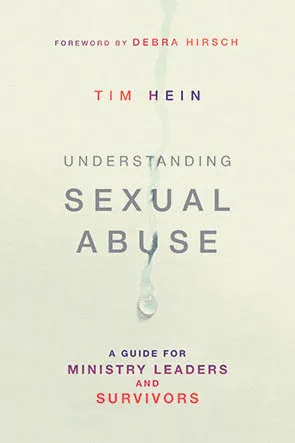UNDERSTANDING SEXUAL ABUSE:
A guide for ministry leaders and survivors
By Tim Hein
Muddy Pearl. 158 pages. £12
ISBN 978 1 910 012 475
Tim Hein and his wife Priscilla are survivors of childhood sexual abuse.
Now a minister and Vice Principal of a Bible College in Adelaide, Australia, Tim has produced this mature and practical guide drawing on his own experience of psychology, counselling and spiritual care. Widely researched and culturally relevant (with illustrations from classical psychiatry, films, novels and pop songs) there is compassion, realism (no quick fixes) and plenty of sanctified commonsense.



